Road signs in Colombia are regulated in the Manual de Señalización Vial standard, which is developed by the Ministry of Transport and based on the United States' MUTCD.[1][2][3] Many regulatory signs are based on European signs, i.e. the Vienna Convention on Road Signs and Signals, while many warning signs are based on U.S. and Canadian signs, i.e. on MUTCD.
Colombia uses the metric system of measurement and drives on the right.
Warning signs
[edit]Warning signs are diamond-shaped as in most of the Americas.
-
SP-01 Sharp turn to left
-
SP-02 Sharp turn to right
-
SP-03 Curve to left
-
SP-04 Curve to right
-
SP-05 Double sharp Curve first to left
-
SP-06 Double sharp Curve first to right
-
SP-07 Winding road To left
-
SP-08 Winding road To right
-
SP-09 Double curve First to left
-
SP-10 Double curve First to right
-
SP-11 Crossroads
-
SP-12 Road intersects from the left
-
SP-13 Road intersects from the right
-
SP-14 "T" junction ahead
-
SP-15 "Y" junction ahead
-
SP-16 Fork to the left
-
SP-17 Fork to the right
-
SP-18 Staggered crossroads, starting with the left
-
SP-19 Staggered crossroads, starting with the right
-
SP-20 Circle road
-
SP-21 Merge from the left
-
SP-22 Merge from the right
-
SP-23 Traffic signals ahead
-
SP-24 Bumpy roadway
-
SP-25 Bump
-
SP-26 Dip
-
SP-27 Steep descent
-
SP-28 Road narrows
-
SP-29 Stop sign ahead
-
SP-30 Road narrows on the left
-
SP-31 Road narrows on the right
-
SP-32 Road narrows on wides
-
SP-33 Yield sign ahead
-
SP-34 Road widens on the left
-
SP-35 Road widens on the right
-
SP-36 Narrow bridge
-
SP-37 Tunnel
-
SP-38 Maximum weight
-
SP-39 Two-way traffic
-
SP-40 Warning sign, go left
-
SP-41 Three lanes, one contraflow
-
SP-42 Falling rock surface
-
SP-43 Three lanes, two contraflow
-
SP-44 Slippery road
-
SP-45 Beware of tractors and other agricultural vehicles
-
SP-46 Beware of Crosswalk area
-
SP-47 School zone
-
SP-48 Beware of Playground
-
SP-49 Capybaras crossing
-
SP-49 Ox crossing
-
SP-49 Deer crossing
-
SP-49 Lizard crossing
-
SP-49 Snake crossing
-
SP-50 Maximum height 4.50 m
-
SP-51 Maximum width 3.20 m
-
SP-52 Railroad crossing Ahead
-
SP-53 Barrier
-
SP-54 Single track Railroad crossing
-
SP-55 Beginning of Dual
-
SP-55A Beginning of Median
-
SP-56 End of Dual
-
SP-56A End of Median
-
SP-57 Pavement ends
-
SP-59 Beware of bike
-
SP-67 Risk of accident
-
SP-73 Strong crosswinds
-
SP-74 Soft verges
Regulatory signs
[edit]-
SR-01 Stop
-
SR-02 Yield
-
SR-03 Go straight
-
SR-04 No entry
-
SR-05 Turn left
-
SR-06 No turn Left
-
SR-07 Turn right
-
SR-08 No turn right
-
SR-09 Playback only
-
SR-10 No playback
-
SR-11 Two-way traffic
-
SR-12 Three lanes (one contraflow)
-
SR-13 Three lanes (two contraflow)
-
SR-14 Lane change prohibited
-
SR-16 No entry for passenger car
-
SR-17 Heavy vehicles stay to the right
-
SR-18 No entry for truck
-
SR-19 Pedestrians crossing on the left
-
SR-20 No entry for Pedestrian
-
SR-21 No entry for Equestrians
-
SR-22 No entry for Bike
-
SR-23 No entry for Motorbike
-
SR-24 No entry for Tractor
-
SR-25 No entry for Animal drawn Vehicle
-
SR-26 No overtaking
-
SR-28 No parking
-
SR-28A No Stopping
-
SR-29 No honking
-
SR-30 Speed limit
-
SR-30A Minimum speed limit 30 km
-
SR-31 Maximum weight 20 tonnes
-
SR-32 Maximum height 4.50 m
-
SR-33 Maximum width 3.20 m
-
SR-34 Taxi parking zone
-
SR-35 Low-beam headlights required
-
SR-36 Stop ahead (e.g. customs, police, toll)
-
SR-37 Bike route
-
SR-38 One-way street
-
SR-39 Two-way street
-
SR-40 Passenger pick up drop-off zone
-
SR-41 No passenger pick up drop-off zone
-
SR-42 Loading and unloading zone
-
SR-43 No loading and unloading zone
-
SR-44 Keep a safe distance
-
SR-45 Pass only on the left of barrier
-
SR-46 Pass only on the right of barrier
Guide signs
[edit]-
SI-07 Parking
-
SI-07A Special parking zone
-
SI-08 Bus stop
-
SI-09 Taxi parking
-
SI-10 Ferry
-
SI-11 Bike route
-
SI-13 Military zone
-
SI-14 Airport
-
SI-15 Lodging
-
SI-16 First aid
-
SI-17 Sanitary services
-
SI-18 Restaurant
-
SI-19 Telephone
-
SI-20 Church
-
SI-21 Auto service shop
-
SI-22 Petrol station
-
SI-23 Tire repair shop
-
SI-25 Pedestrian crossing designed for disabled persons
-
SI-29 Rail transit
-
SI-30 Other public transit
-
SI-31 Recreation zone
See also
[edit]References
[edit]- ^ "Anexo 7. Concepto Técnico N° 17 SM-32236-09" (PDF). www.movilidadbogota.gov.co (in Spanish). Retrieved 2024-01-22.
- ^ Saboya López, Adriana del Pilar (2015-05-09). "Normativa y Señalización de los Cruces Férreos en Bogotá". Normativa y Señalización de los Cruces Férreos en Bogotá (in Spanish).
- ^ "T-011-22 Corte Constitucional de Colombia". www.corteconstitucional.gov.co (in Spanish). Retrieved 2024-01-22.


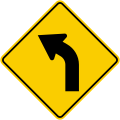













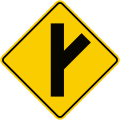










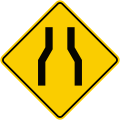
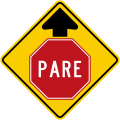



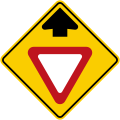

















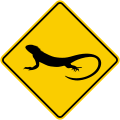

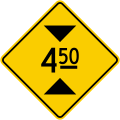







































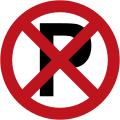










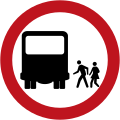







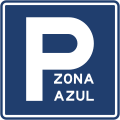



















Well, that’s interesting to know that Psilotum nudum are known as whisk ferns. Psilotum nudum is the commoner species of the two. While the P. flaccidum is a rare species and is found in the tropical islands. Both the species are usually epiphytic in habit and grow upon tree ferns. These species may also be terrestrial and grow in humus or in the crevices of the rocks.
View the detailed Guide of Psilotum nudum: Detailed Study Of Psilotum Nudum (Whisk Fern), Classification, Anatomy, Reproduction